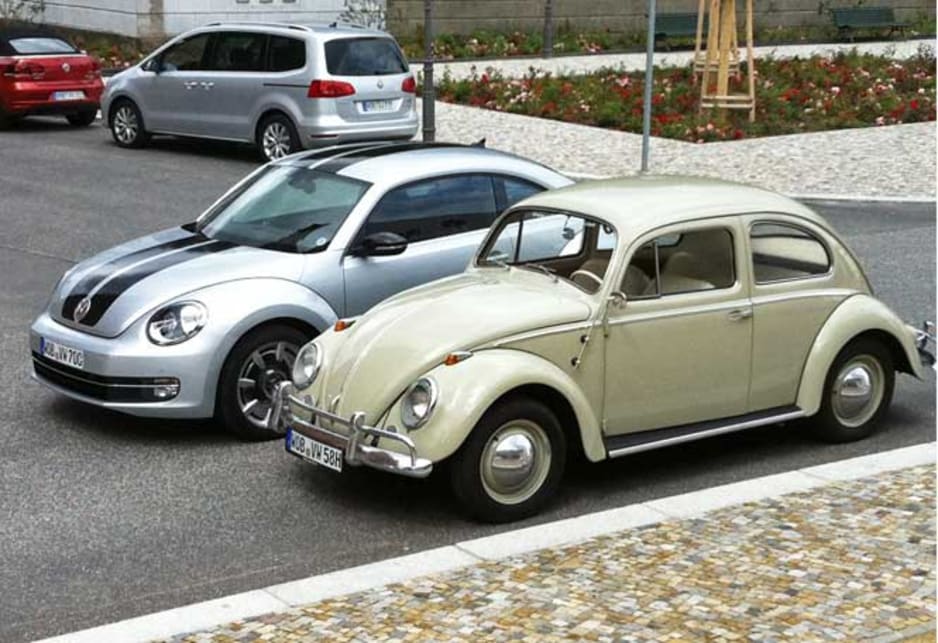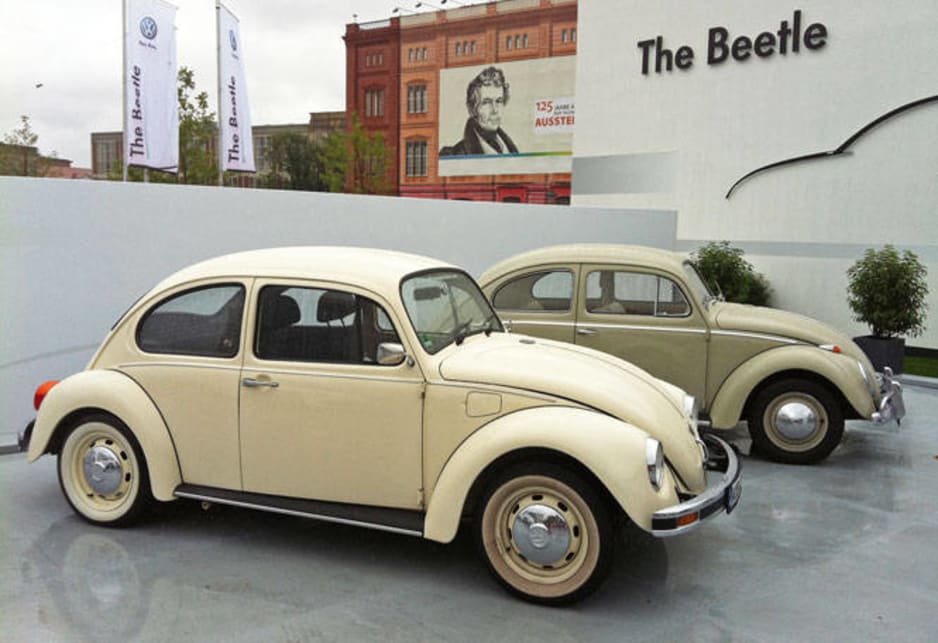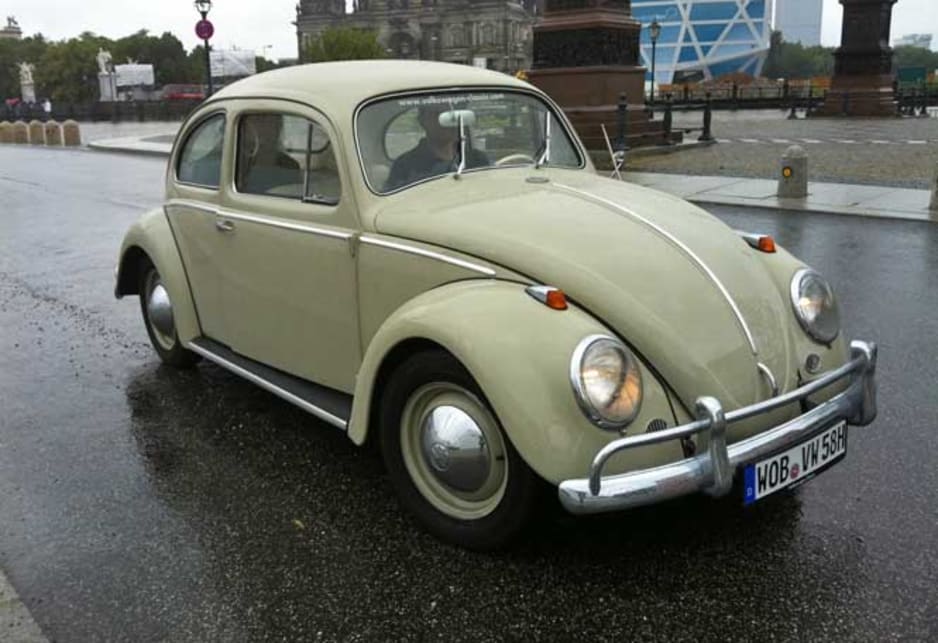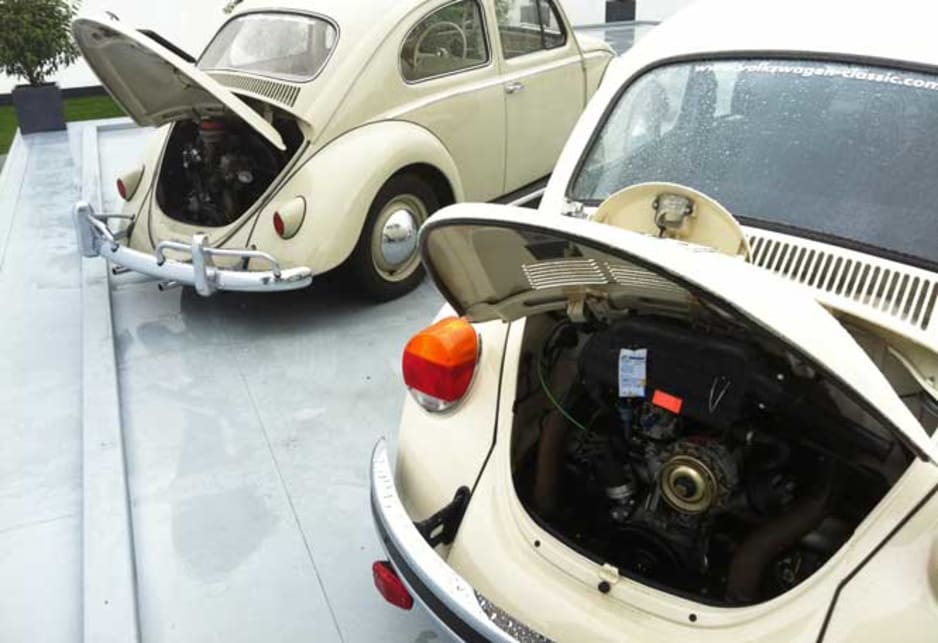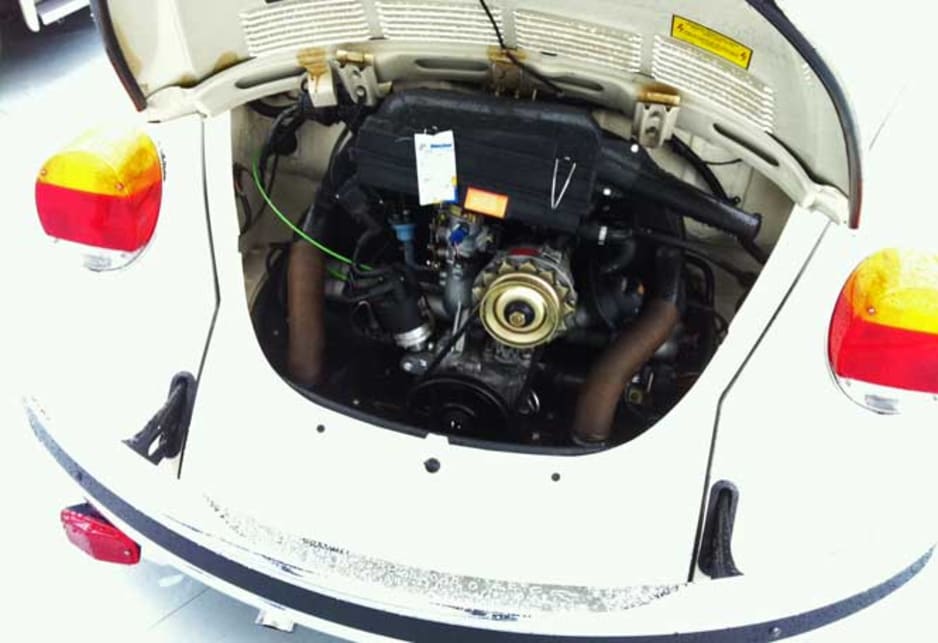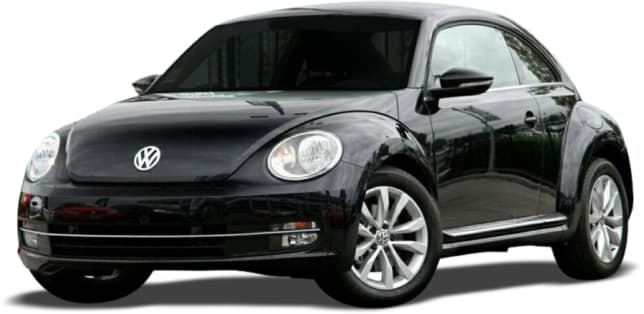
Volkswagen Beetle 2013 Review
- Volkswagen Beetle
- Volkswagen Beetle 2013
- Volkswagen Beetle Reviews
- Volkswagen Reviews
- Volkswagen Sedan Range
- Volkswagen Hatchback Range
- Sedan
- Hatchback
- Volkswagen
- Prestige & Luxury Cars
- Small Cars
NEWS flash: Beetles aren't accomplished skaters on the polished stone surface of a Berlin street. Putting a 1958 model against the next model showed that.
Built in the days when traction control merely meant being alert enough to avoid ice patches on the footpath, the 1958 Volkswagen Beetle perfectly reflects its origins in a simpler era.
Few cars embrace simplicity like Volkswagen's Beetle and even fewer dive into the comparative starkness of a 1950s model.
It only takes one drive through a traffic-clogged Berlin CBD during a rainstorm to recognise how quickly cars have advanced - in safety, performance, comfort and pretty much everything else except weight - and how lucky I am that I don't have a car from the 1950s as a daily drive.
Which is ironic because my first car was a 1959 Beetle, with semaphore indicators, a wooden stick with graduated marks for a "dip and read" fuel gauge, a cabin heater operated by a screw valve on the floor and a 6-volt electrical system that decided when it felt like operating. The original valve radio took about five minutes to warm up, timed to coincide with me closing the choke lever.
So it makes me laugh at claims that the 1950s Beetle and the 2012 Beetle share a bloodline. Even the Volkswagen badge and the curved body panels wouldn't convince a sharp lawyer arguing a case against awarding inheritance.
1958 Volkswagen Beetle
The 1958 arrives in the allotted carbay in pristine condition, in regulatory cream paint over a cabin with red leatherette upholstery. The steering wheel is on the wrong side but it's the same deal as my car, right down to the dull clunk of the gearshifter in its socket, the half-hearted action of the wire-thin wipers on the flat glass, the coolness of the white, thin-rimmed plastic steering wheel and the odd feel of the bottom-hinged clutch pedal.
The noise from the 1.2-litre engine is the same, the steering is as firm and direct and the forward motion is an odd collaboration of an eager engine note and ridiculously low first gear ratio. And it feels so fragile.
It could have been quite an enjoyable ride. But thrust into traffic, alone and without the reassurance of a GPS or a map - the instructions were to "go around the block" which turned out to be more than a simple series of right turns - or an indicator that anyone could see. Or, as the first corner taught me, brakes.
These brakes had two actions - off or on - controlled by a pedal that had a 5mm movement and felt like stomping on concrete. You can easily lock the brakes on the cobblestone sections of the street, especially if a bus pulls out in front - as one did.
2003 Volkswagen Beetle
The silhouette is practically the same and the detail - removable mudguards, foot runners and clamshell boot and bonnet lids - is similar but the 2003 Beetle steps up in comfort and roadholding.
Ending a run of more than 21.5 million, this is the last aircooled Beetle ever made and its importance means the Brazilian is now part of Volkswagen's collection in Germany.
With water-cooled, front-wheel drive platforms firmly cemented in Volkswagen's manifest by 2003, the last Beetle represents the end of a the longest-running car of a single design platform.
Which is a good thing. I admire Beetles and could have one tomorrow, but their limitations in handling, safety, cabin space, ergonomics and a trail of other things, demands they be driven at their designed pace. Which is slower than modern traffic.
The light-beige 2003 sits firmly on the road and the fuel-injected 37kW 1.6-litre engine is responsive and willing. Bulky black plastic padding unseemly covers the original metal fascia and there are seatbelts - the 1958 had none - and form-fitting, high-backed seats.
There are still four forward gears and the pattern is the same - including the push-down and forward movement for reverse - but this time the steering and the brakes are lighter and have more feel.
But cabin room is only marginally better than the older model, regulating the rear seat to children. It feels as new as when it was made eight years prior but while the packaging is fresh the contents still clearly show their origins.
2012 Volkswagen Beetle
It's easy to follow the thread from 1958 - indeed, from the first Volkswagen of 1938 - through to the Brazilian-built finale of 2003. Then it's a generational step into 2012.
This isn't a real Beetle. It's a Golf shaped like a Beetle and though it's roomier and quicker, has more power and far better roadholding than the New Beetle that preceded it, it's not much more than a design exercise.
But it is a rewarding drive, especially the 147kW version that uses a detuned Golf GTI engine and a seven-speed DSG.
It is more about driving and practicality. Compared with the outgoing New Beetle, the boot is almost three times the size and the driving position has returned to "normal" - gone if the huge distance between the steering wheel and the windscreen.
Volkswagen in July debuted the Beetle in Berlin saying it will be about 10 per cent cheaper than the Golf - so start-up will be about $25,000 - but it won't get here until early next year.
After a production period of 77 years, the Beetle may be again worth the wait.
Pricing guides
Range and Specs
| Vehicle | Specs | Price* | |
|---|---|---|---|
| Fender Edition | 1.4L, —, 7 SP AUTO | $12,650 – 16,830 | 2013 Volkswagen Beetle 2013 Fender Edition Pricing and Specs |
| (base) | 1.4L, —, 6 SP MAN | $11,660 – 15,620 | 2013 Volkswagen Beetle 2013 (base) Pricing and Specs |
$11,990
Lowest price, based on 15 car listings in the last 6 months


